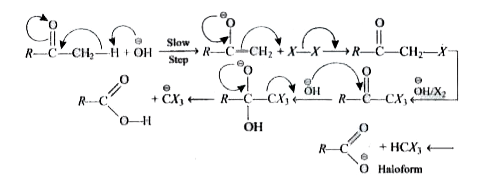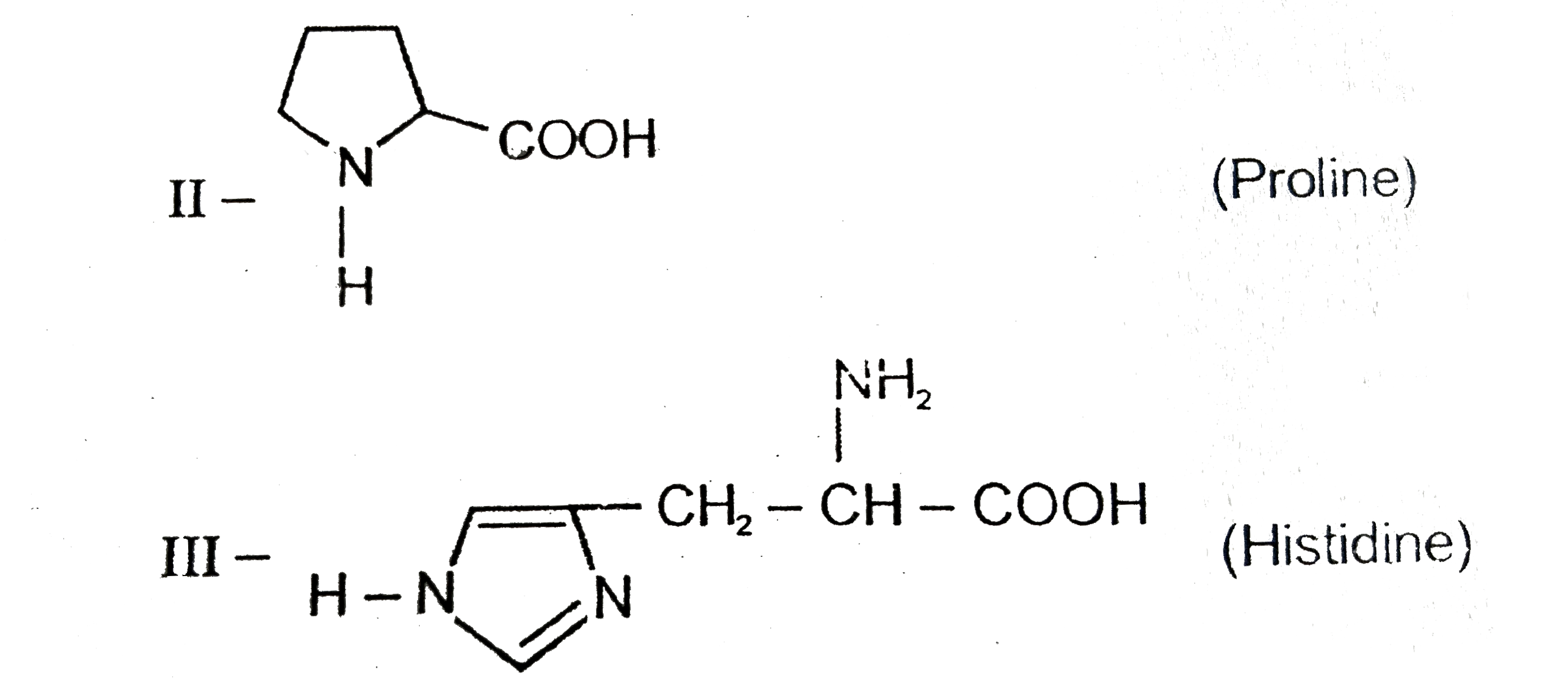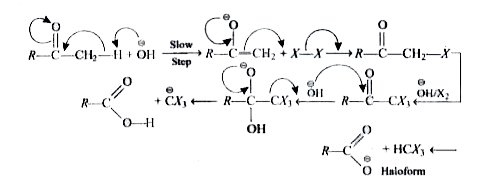NH+3−R∣C−COO− given structure represent which form of amino acid?
The correct Answer is:Zwitter ionic form
To determine which form of amino acid is represented by the structure NH3+−C−COO−, we can follow these steps:
1. Identify the Components:
- The structure consists of an amino group (NH3+), a carbon backbone (C), and a carboxyl group (COO−).
- The presence of a positively charged amino group and a negatively charged carboxyl group indicates that the molecule has both positive and negative charges.
2. Understand the Charge Distribution:
- The amino group (NH3+) indicates that it is protonated (gained a hydrogen ion), making it positively charged.
- The carboxyl group (COO−) indicates that it has lost a hydrogen ion, resulting in a negative charge.
3. Define the Zwitterionic Form:
- An amino acid in its zwitterionic form has both a positive and a negative charge but is overall neutral. This occurs due to the ionization of the amino and carboxyl groups.
- The zwitterionic form is typically observed at physiological pH (around 7.4), where the amino group is protonated and the carboxyl group is deprotonated.
4. Conclusion:
- Given the structure NH3+−C−COO−, it is clear that this is the zwitterionic form of the amino acid. This form is characterized by the presence of both a positively charged amino group and a negatively charged carboxyl group.
Final Answer:
The structure NH3+−C−COO− represents the zwitterionic form of the amino acid.
---
- The structure consists of an amino group (NH3+), a carbon backbone (C), and a carboxyl group (COO−).
- The presence of a positively charged amino group and a negatively charged carboxyl group indicates that the molecule has both positive and negative charges.
- The amino group (NH3+) indicates that it is protonated (gained a hydrogen ion), making it positively charged.
- The carboxyl group (COO−) indicates that it has lost a hydrogen ion, resulting in a negative charge.
- An amino acid in its zwitterionic form has both a positive and a negative charge but is overall neutral. This occurs due to the ionization of the amino and carboxyl groups.
- The zwitterionic form is typically observed at physiological pH (around 7.4), where the amino group is protonated and the carboxyl group is deprotonated.
- Given the structure NH3+−C−COO−, it is clear that this is the zwitterionic form of the amino acid. This form is characterized by the presence of both a positively charged amino group and a negatively charged carboxyl group.
The structure NH3+−C−COO− represents the zwitterionic form of the amino acid.
Topper's Solved these Questions
Similar Questions
Knowledge Check
Refer to the given reacton, what does it depict?
R1−H∣C∣NH+3−COO−Amino-donor+R2−C∣∣O−CAmino-acceptorOO−⇔R1C∣∣O−COO−+R2−H∣C∣NH+3−COO−Aoxidative aminationBreductive aminationCtransaminationDdeaminationPh−O∣∣C−O∣∣C−PhNaOH−−−→ Product find structure of product:
APh−O∣∣C−CH∣OH−PhB CPh−CH∣Ph−CH2OHDPh−OH∣C∣Ph−CH2OH
CPh−CH∣Ph−CH2OHDPh−OH∣C∣Ph−CH2OHCompound having −O∣∣C−CH3 group reacts rapidly with halogen in presence of a base to form haloform. The reaction is known as haloform.
R−O∣∣C−CH3X2+ϴOH−−−−→R−O∣∣C−ϴO+CHX3
Mechanism


Which of the following is correct comparisonof rate of haloform reaction with various halogens?ArCl2>rBr2>rI2BrI2>rBr2>rCl2CrCl2=rBr2=rI2DrBr2>rCl2>rI2
R−CH∣NH2−COO−HCI(aq)−−−−−→
View SolutionNitrous acid (HNO2) converts amino acids into hydroxy acids with retention of configuration. Estimation of nitrogen gas evolved in the reaction is the basis of Van slyke estimation of amino acids.
R−NH2∣CH−COOHHNO2−−−→R−OH∣CH−COOH+N2↑⏐ ⏐ ⏐⏐+H2O
Which of the following amino acids cannot be analysed by Van slyke method ?
(I) HS−CH2−NH2∣CH−COOH (cysteine)


View SolutionCompound having −O∣∣C−CH3 group reacts rapidly with halogen in presence of a base to form haloform. The reaction is known as haloform.
R−O∣∣C−CH3X2+ϴOH−−−−→R−O∣∣C−ϴO+CHX3
Mechanism

Which of the following will yield iodoform on reaction with I2+NaOH?
View SolutionR−O∣∣C−Cl+Z→R−O∣C−R The reagent Z is :
View SolutionCompound having −O∣∣C−CH3 group reacts rapidly with halogen in presence of a base to form haloform. The reaction is known as haloform.
R−O∣∣C−CH3X2+ϴOH−−−−→R−O∣∣C−ϴO+CHX3
Mechanism

Consider the following reactions:
Reaction I →Ph−O∣∣C−CH3Cl2,ϴOH−−−−→Ph−O∣∣C−ϴO+CHCl3
Reaction II →Ph−O∣∣C−CD3−Cl2,ϴOH−−−−→Ph−O∣∣C−ϴO+CDCl3
Which of the following is correct comparison of the rate of reaction I and II?
View Solution
